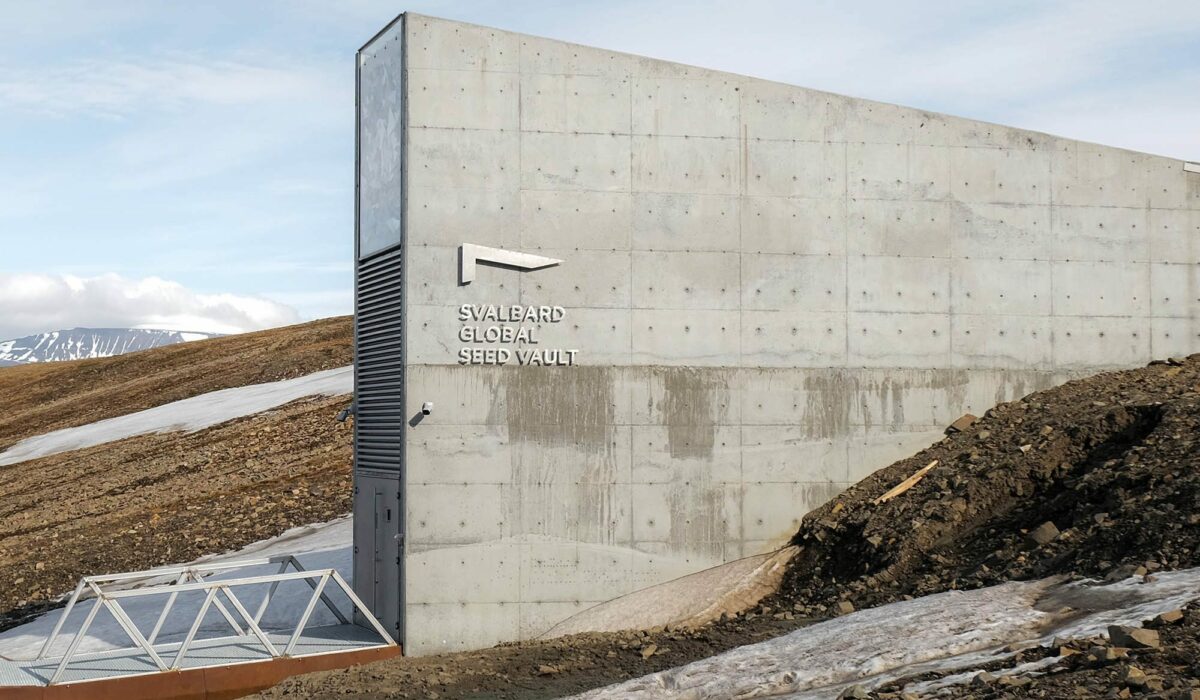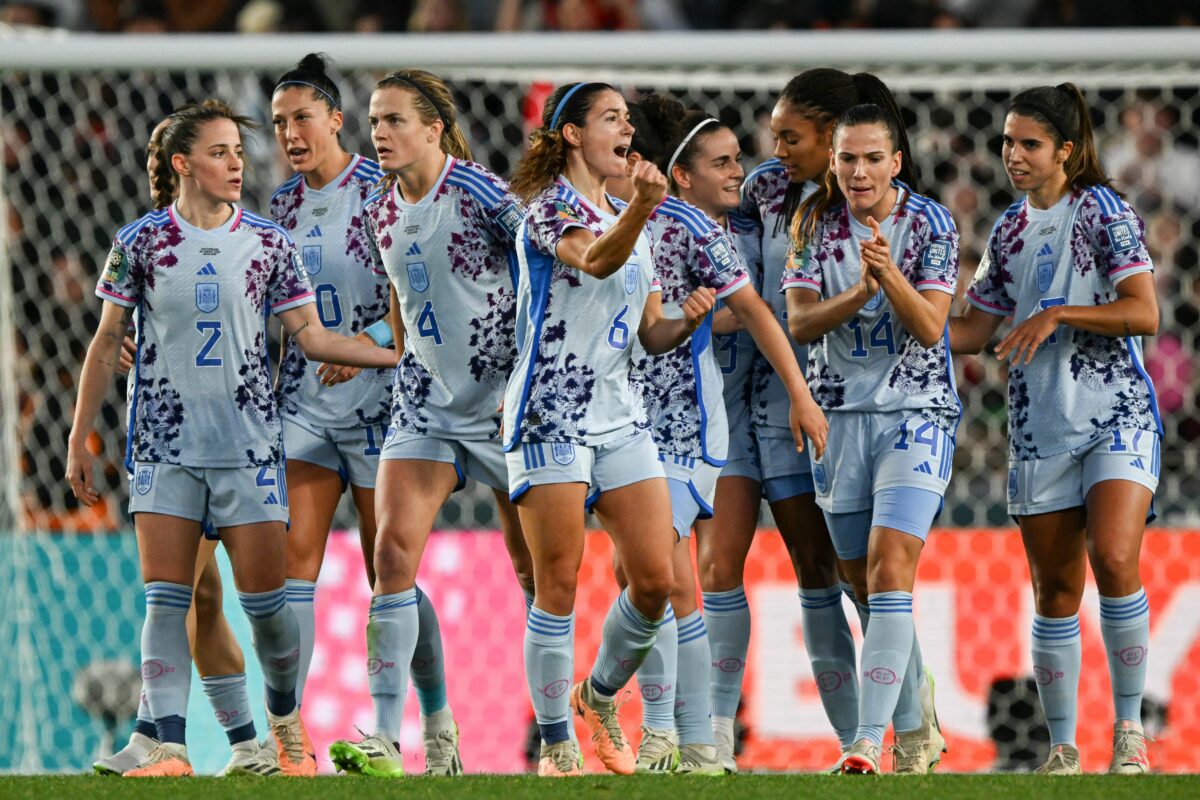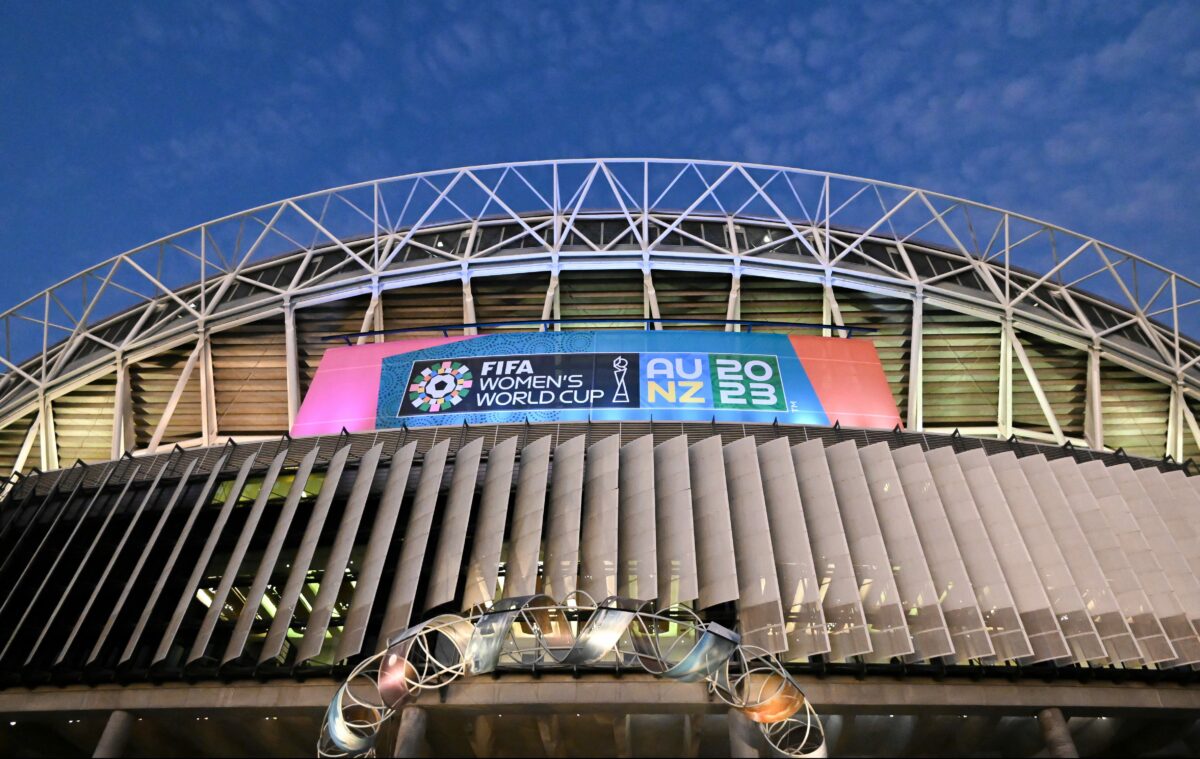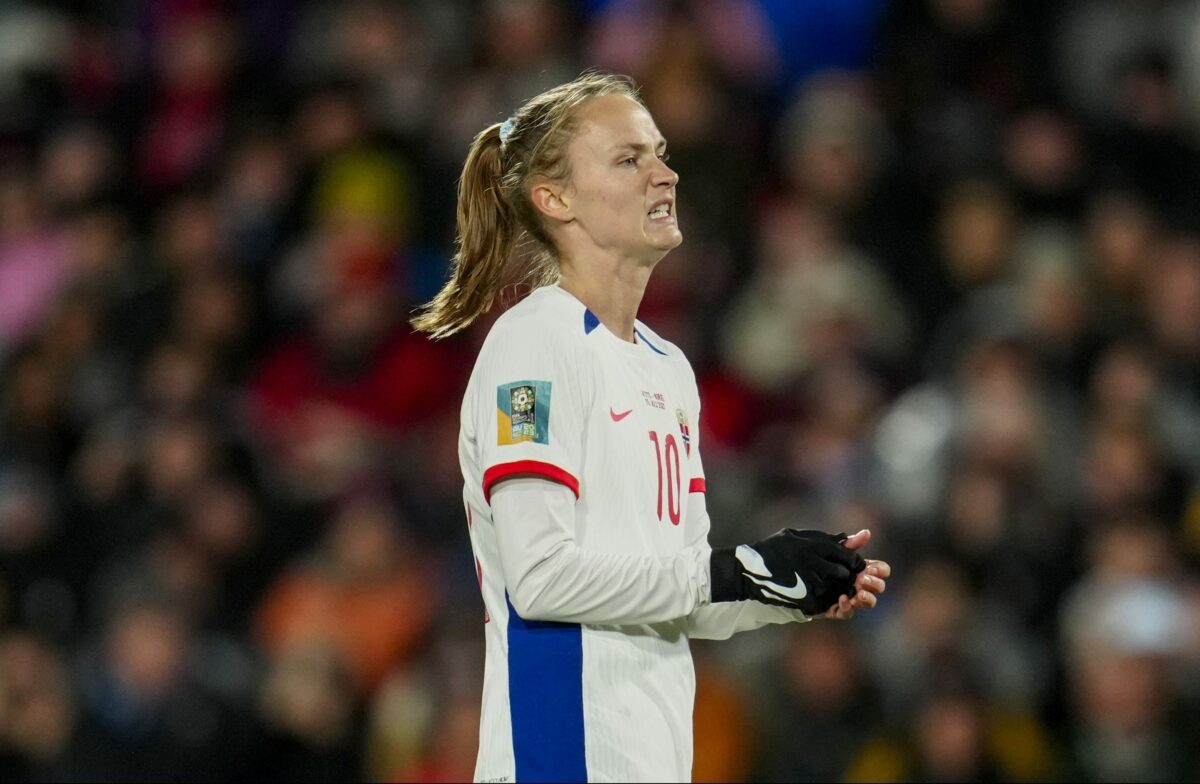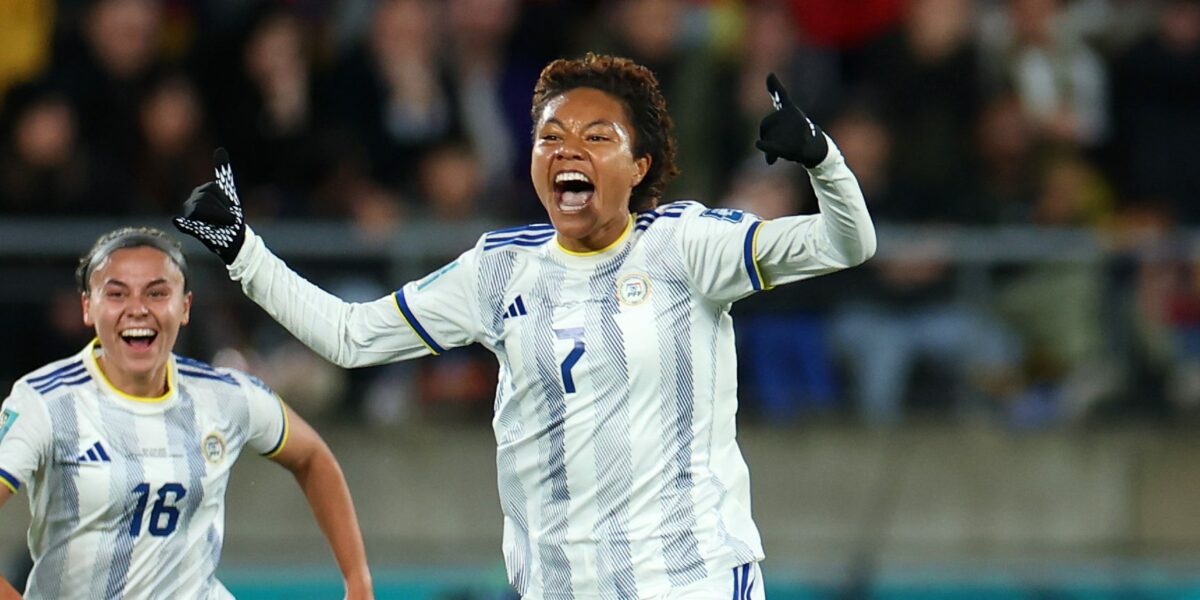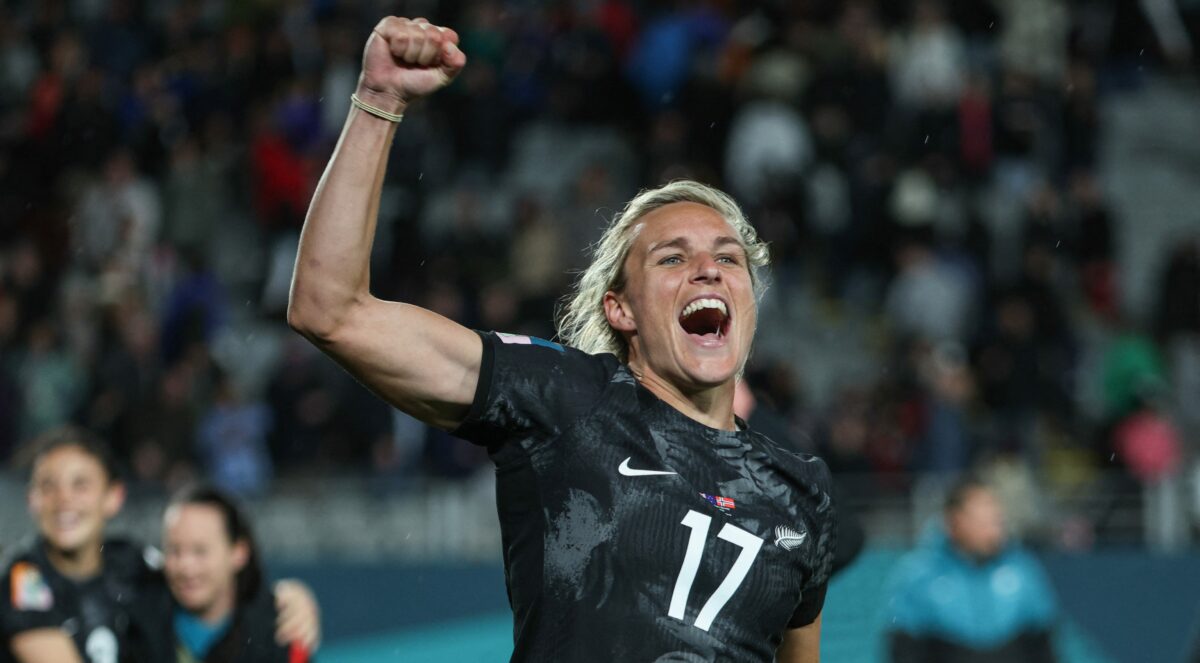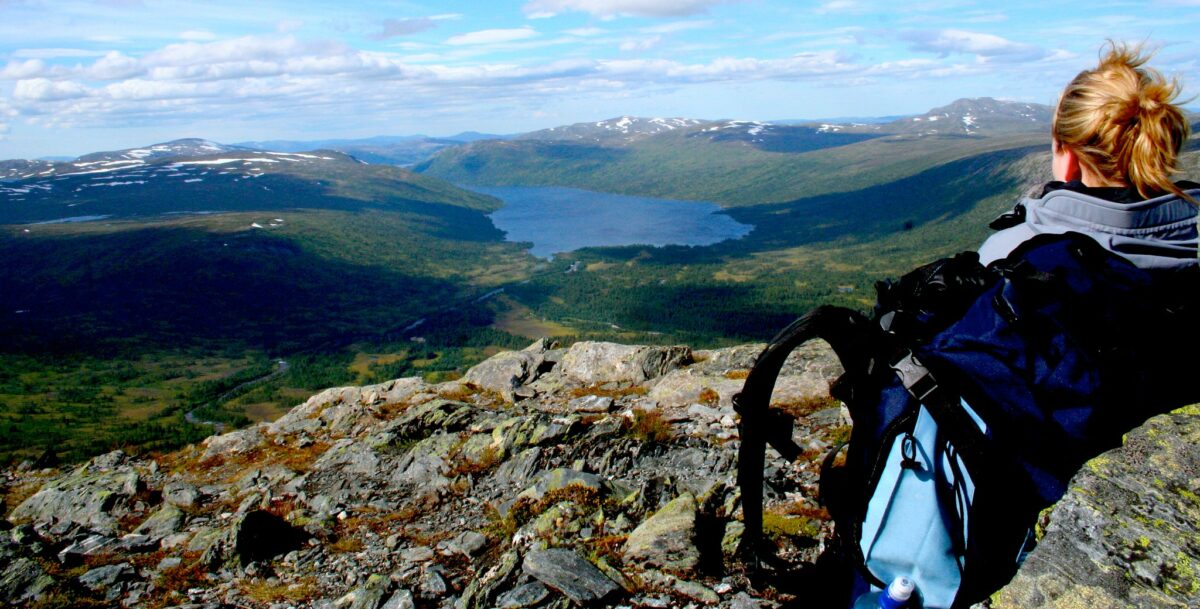In remote Svalbard, halfway between the Norwegian mainland and the North Pole, a mysterious bunker is carved into Plateau Mountain. If you drive between the town of Longyearbyen and the Svalbard airport, you can see the entrance poking out of the snow and permafrost. But that’s as close as you’ll get. This high-security facility is the Svalbard Global Seed Vault. It houses backup seeds from around the world to ensure crop biodiversity.
It’s been called the “doomsday vault” because the seeds are waiting patiently to repopulate fields in case of war, drought, plagues of locusts, or other manmade or natural disasters. The vault holds more than 1 million samples from almost every country.

Why Svalbard?
More than 1,700 gene banks worldwide store food crop seeds for safekeeping. But not only are they vulnerable to major catastrophes, but also to simple problems like poor management and lack of funding. A freezer breaks? There goes your country’s biodiversity backup. That’s why a well-run global seed vault is so valuable.
Svalbard is located far from the world’s other gene banks. In fact, it’s the farthest north you can fly on a scheduled flight, making it remote but still accessible. Seed shipments only have to travel 10 minutes from the Svalbard airport. The area is above sea level, geologically stable, and has low humidity. Nowhere is immune from global warming, but Svalbard is one of the world’s coldest places. The vault is further cooled down to -18 degrees Celsius (-0.4 degrees Fahrenheit). But even if the cooling system were to fail, permafrost would keep the seeds viable for a long time.

How are seeds stored?
The Nordic Genetic Resources Centre runs the seed vault. Countries around the world can store seeds in the vault for free. Construction started in 2006, and the first seeds arrived in 2008.
Workers receive sealed boxes of seeds in a portal room. From there, they wheel them down a high-tech, watertight tunnel and deposit the seeds in one of three chambers. This should be enough storage for decades to come. But there’s plenty of room in the mountain to carve out more chambers if needed. The chambers house long shelves with colorful boxes made of plastic, wood, or cardboard.
Each depositing gene bank maintains ownership of its seeds. Only that gene bank can request to have its seeds returned. In 2015, Syria made the first withdrawal. The International Center for Agricultural Research in Dry Areas, originally located in the hard-hit city of Aleppo, requested that the Svalbard vault return 130 of its 325 boxes of deposited seeds to replace those damaged by war.
Those Syrian seeds were safely stored in Svalbard, alongside cowpea from Sudan, pearl millet from Zambia, heirloom seeds from the United States, and barley from the remote Pamir Mountains of Tajikistan, among about a million others.
Can you visit?
While tourists aren’t allowed inside this high-security facility (for obvious reasons), several tours take visitors to see the entrance. If you find yourself in remote Longyearbyen, consider booking a guided Seed to Summit hike, where you’ll learn all about the town’s coal mining history and pass the vault entrance. Or see the area by car on the two-hour Longyearbyen in a Nutshell tour.

